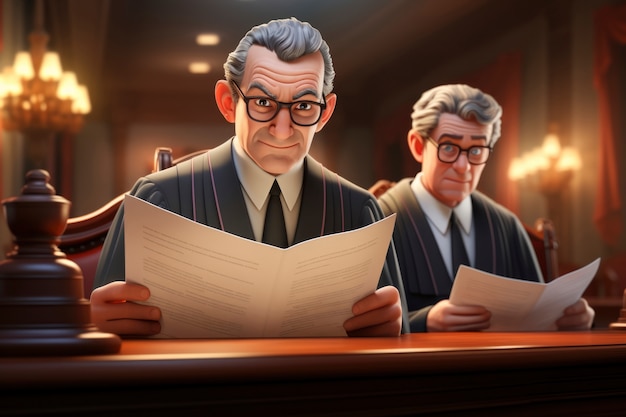Understanding the Facts of Shaw v. Reno (1993) – A Comprehensive Analysis

The case of Shaw v. Reno (1993) involved a challenge to the redistricting plan in North Carolina.
The Supreme Court decision in Shaw v. Reno (1993) had a significant impact on the interpretation of the Equal Protection Clause of the Fourteenth Amendment.
The central issue in Shaw v. Reno (1993) was whether the redistricting plan violated the principle of one person, one vote.
Shaw v. Reno (1993) raised questions about the constitutionality of redistricting based on race.
The Supreme Court’s ruling in Shaw v. Reno (1993) emphasized the need for strict scrutiny in cases involving racial gerrymandering.
Prior to Shaw v. Reno (1993), redistricting based on race was generally considered justified to remedy past discrimination.
Shaw v. Reno (1993) marked a shift in the Court’s approach to racial gerrymandering, making it more difficult to defend such practices.
The case of Shaw v. Reno (1993) highlighted the tension between racial equality and political representation.
The Supreme Court’s ruling in Shaw v. Reno (1993) clarified that race cannot be the predominant factor in redistricting decisions.
Shaw v. Reno (1993) involved the challenge of a redistricting plan that created a majority-minority district.
The Shaw v. Reno (1993) decision established that redistricting plans must be justified by compelling reasons other than race.
The Court’s ruling in Shaw v. Reno (1993) opened the door for future challenges to racial gerrymandering.
Understanding the Facts of Shaw v. Reno (1993) – A Comprehensive Analysis part 2
Shaw v. Reno (1993) highlighted the ongoing struggle to reconcile racial fairness and political representation in the United States.
The Supreme Court’s decision in Shaw v. Reno (1993) underscored the need for careful scrutiny of redistricting plans to prevent racial discrimination.
Shaw v. Reno (1993) was a landmark case that addressed the constitutionality of racial gerrymandering.
The ruling in Shaw v. Reno (1993) limited the ability of states to create racially homogenous districts.
The case of Shaw v. Reno (1993) brought to light the potential negative consequences of race-based redistricting.
The Court’s decision in Shaw v. Reno (1993) aimed to protect the principle of equal protection under the law.
Shaw v. Reno (1993) demonstrated the Court’s concern with preventing the marginalization of racial and ethnic minorities.
The Supreme Court’s ruling in Shaw v. Reno (1993) set a precedent for future cases involving racial gerrymandering.
Shaw v. Reno (1993) underscored the importance of geographic compactness in redistricting decisions.
The case of Shaw v. Reno (1993) prompted a reevaluation of the boundaries between acceptable and unacceptable redistricting practices.
The Supreme Court’s decision in Shaw v. Reno (1993) highlighted the need for a balance between minority representation and the prevention of racial isolation.
Shaw v. Reno (1993) raised questions about the extent to which race can be considered in redistricting decisions.
The ruling in Shaw v. Reno (1993) stressed that race should not be the dominant factor in creating minority-majority districts.
The case of Shaw v. Reno (1993) demonstrated the Court’s commitment to ensuring fair and equal political representation for all citizens.
The Supreme Court’s decision in Shaw v. Reno (1993) reflected an evolving understanding of the relationship between race and redistricting.
Shaw v. Reno (1993) illustrated the complexities of balancing racial equality and political fairness in redistricting.
The Court’s ruling in Shaw v. Reno (1993) highlighted the importance of considering the underlying motivations behind redistricting decisions.
Shaw v. Reno (1993) challenged the conventional wisdom of using race as a guiding principle in redistricting.
The Supreme Court’s decision in Shaw v. Reno (1993) called into question the prevailing practices of racial redistricting.
Shaw v. Reno (1993) prompted a reevaluation of redistricting plans across the country.
The case of Shaw v. Reno (1993) had a lasting impact on the interpretation of the Voting Rights Act of 1965.
The Supreme Court’s ruling in Shaw v. Reno (1993) reaffirmed the principle of equal protection under the law.
Shaw v. Reno (1993) raised concerns about the potential for minority vote dilution in redistricting.
The Court’s decision in Shaw v. Reno (1993) emphasized the need for neutrality and fairness in redistricting decisions.
Shaw v. Reno (1993) represented a turning point in the Court’s approach to racial gerrymandering.
The Supreme Court’s ruling in Shaw v. Reno (1993) spurred a nationwide conversation about the role of race in redistricting.
Shaw v. Reno (1993) challenged the assumptions about the necessary use of race in redistricting.
The case of Shaw v. Reno (1993) demonstrated the challenges of achieving both racial diversity and political fairness in redistricting.
The Supreme Court’s decision in Shaw v. Reno (1993) called attention to the potential for manipulating redistricting plans for partisan gain.
Shaw v. Reno (1993) highlighted the importance of considering both racial and non-racial factors in redistricting decisions.
The Court’s ruling in Shaw v. Reno (1993) emphasized the necessity of narrowly tailored redistricting plans.
Shaw v. Reno (1993) challenged the use of race as a criterion for determining political representation.
The Supreme Court’s decision in Shaw v. Reno (1993) contributed to the ongoing evolution of redistricting jurisprudence.

